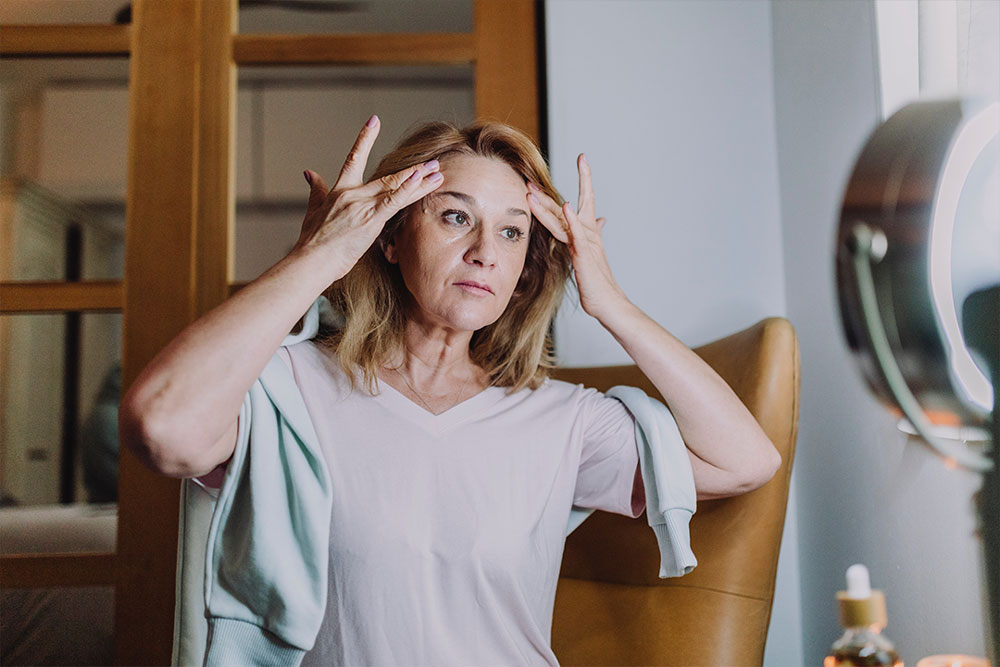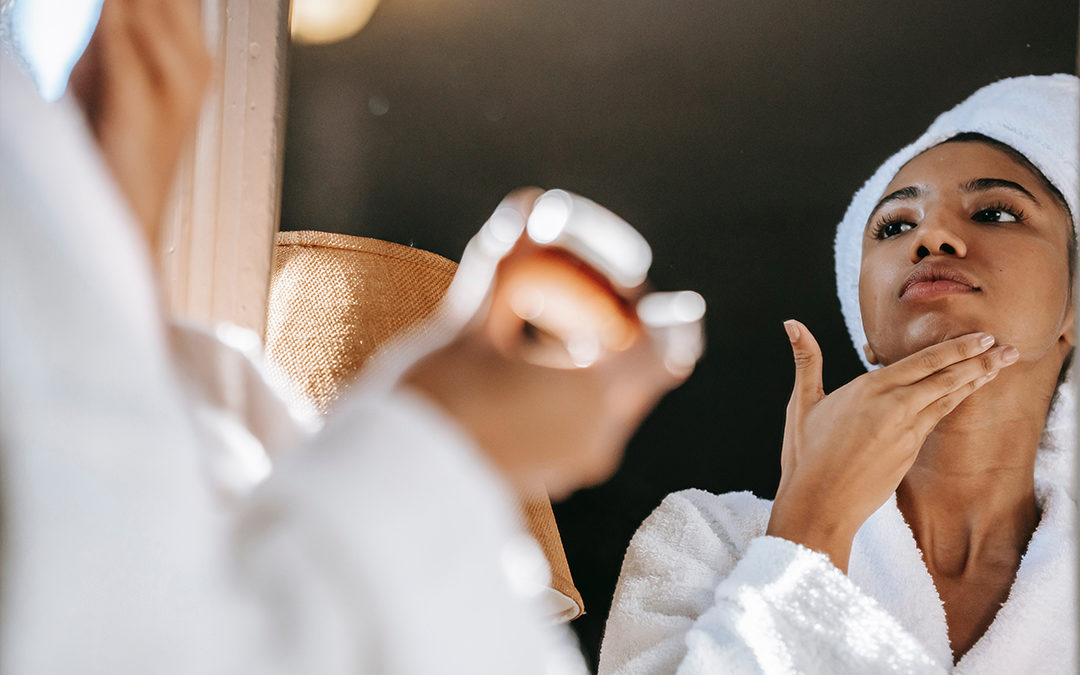During my many years in private practice, I gained a kind of intuition about how healthy people are. This came from a lot of careful observation—it’s a skill any observant doctor develops over time. It’s pretty incredible what you can tell about someone just from looking—their posture, whether they move gracefully and smoothly or stiffly and with obvious pain, the shape of the body, the muscle tone, the quality of hair and nails, and even their expression—whether it is lively, awake, and alert, or dull, distracted, and foggy. But there is perhaps no greater indicator of health than the skin—health dysfunction often sends it first-line alerts through the skin, and the quality of the skin is therefore revealing. Skin that is very dry or very oily, flaky or with breakouts, crepey, wrinkled, or deeply creased all reveal things about what’s going on inside. Is the skin evenly colored, smooth, radiant? Or is it pale or florid, rashy or rough, or just dull and grayish?
You don’t need a doctor to take a good hard look at your skin. You can do it yourself. In my book Vibrant, I suggest readers do what I call a mirror assessment, to look at themselves with an honest eye and practice looking for clues that indicate vibrancy or health issues. A full-length mirror is great for a once-over, but a magnifying mirror is best when you really want to examine your skin. If you haven’t used one before, you may find it to be a bit startling. Most people don’t look at their skin in such an up-close-and-personal way, and you may be relieved to know that nobody else sees your skin the way it looks in one of these mirrors. It’s just for “diagnostic” purposes that I suggest you use one of these, although a regular mirror is also fine.
Now let’s take a look. What do you see? Examine your forehead, the skin around your eyes, nose, mouth. Look at your chin, jawline, and neck. Don’t look with a critical eye. Look with a curious eye. This isn’t about making you feel badly. It’s purely information about where you might need to make some adjustments to your lifestyle.

Here’s what to look for—some of these signs could indicate serious conditions, while others are mostly reflections of lifestyle:
- Dark velvety patches: If you have dark patches of skin with a thick velvety texture, which may have an odor, you probably have acanthosis nigricans. These patches tend to form in creases, like on the neck, in the armpits, elbows, knees, or groin area. They may also appear on your palms or the soles of your feet, or even on your lips. These patches are often caused by excessive insulin levels, which can occur when your blood sugar goes too high, and your body tries to compensate by pumping out too much insulin. Eventually, when the body can no longer control the blood sugar with insulin, type 2 diabetes is the result, so consider these patches to be a warning that your blood sugar is not controlled. See your doctor to get tested for pre-diabetes, or type-2 diabetes, and be sure to show your doctor those patches. If you can get your blood sugar back under control, these patches will likely go away.
- Butterfly rash: If you have a bright red rash on your face in the shape of a butterfly, on your nose and spreading out like wings across both cheeks, this could be a sign of a sunburn, or the inflammatory condition called rosacea, or more seriously, it could be a sign of an autoimmune condition called cutaneous lupus erythematosus (often just called lupus). The lupus rash is actually called a malar rash. If you think you could have lupus, which also often comes with joint pain, fatigue, and can have organ involvement, definitely see your doctor. Lupus is a serious condition.
- Rosacea: A bright red face, especially on the nose and cheeks and around the mouth, may be sign of rosacea, which is a skin condition that involves facial redness, broken vessels, thickened areas, and acne. There are different types of rosacea (some types have acne, some don’t, some affect the eyes, etc.) but there is some evidence that rosacea may be one side effect of systemic inflammation that could be linked to other diseases related to inflammation, like heart disease and some types of dementia. For this reason, talk to your doctor if you think you have rosacea. There are also some effective treatments, but I always suggest starting with an anti-inflammatory diet rich in vegetables, seafood, and fruit, and low in sugar, junk food, fried food, and saturated fat.
- Discoloration and textural changes: Darker or lighter spots on your face, as well as rough spots, could be due to sun exposure, hormonal changes, or simply aging, but in my experience, these can be largely avoided by avoiding sun exposure on the face and living a healthful lifestyle. If you do have these, there are good treatments for them. If a spot looks strange or is raised in any way, do get it checked by a dermatologist. This could be a form of skin cancer, which is usually easy to treat but should not be ignored. Point out any color changes to your dermatologist.
- Crepey and flaky skin. Many people get crepey skin as they age, and after losing a lot of weight, when the skin can’t keep up with the fat loss. Others fight flaking. However, staying hydrated by drinking half your body weight in ounces of water every day and keeping the skin protected from the sun and moisturized can drastically reduce creping as well as flaking. For creping, coconut or almond oil are excellent treatments for the skin, or use your favorite lotion, preferably with all natural botanical ingredients. Remember that the skin is permeable, so if you slather on chemicals every day, you are absorbing them. For flaking, try a gentle exfoliating product, or cleanse gently with a textured cloth. Your skin wants to shed and renew, but you can help that with good skin hygiene, as well as with enough water.
- Wrinkles. To some extent, everyone will eventually get some facial wrinkles. I like to think of them as badges of honor and signs of an expressive face. However, a diet rich in high-antioxidant, anti-inflammatory vegetables and fruits will fight skin damage from free radicals and can slow down wrinkling. Omega-3 fatty acids in cold-water fatty fish will plump the skin. So will lots of water and regular exercise, which increases circulation to the skin and helps the lymphatic system get rid of waste.
The truth is, when skin doesn’t look good, some aspect of lifestyle is almost always contributing, and improving lifestyle will add healthy color and glow, as well as reducing rashy red areas and improving texture and wrinkles. I am not necessarily against treatments like Botox and fillers for those who really want them, but I highly recommend getting the foundational elements of lifestyle in place first, because these can often make such a difference that people decide they don’t need those cosmetic procedures after all. Eat food that feeds your skin (especially vegetables, berries, and fatty fish), exercise, work on reducing your stress, and connect with others, so if you are going to get some wrinkles, they will be smile lines, rather than frown lines. Moisturize, and for goodness’ sake, use sunscreen on your face! Prioritize a healthful lifestyle, and I predict that the next time you do a mirror assessment, you’ll notice some beautiful improvements. That’s your body telling you to keep up the good work!


